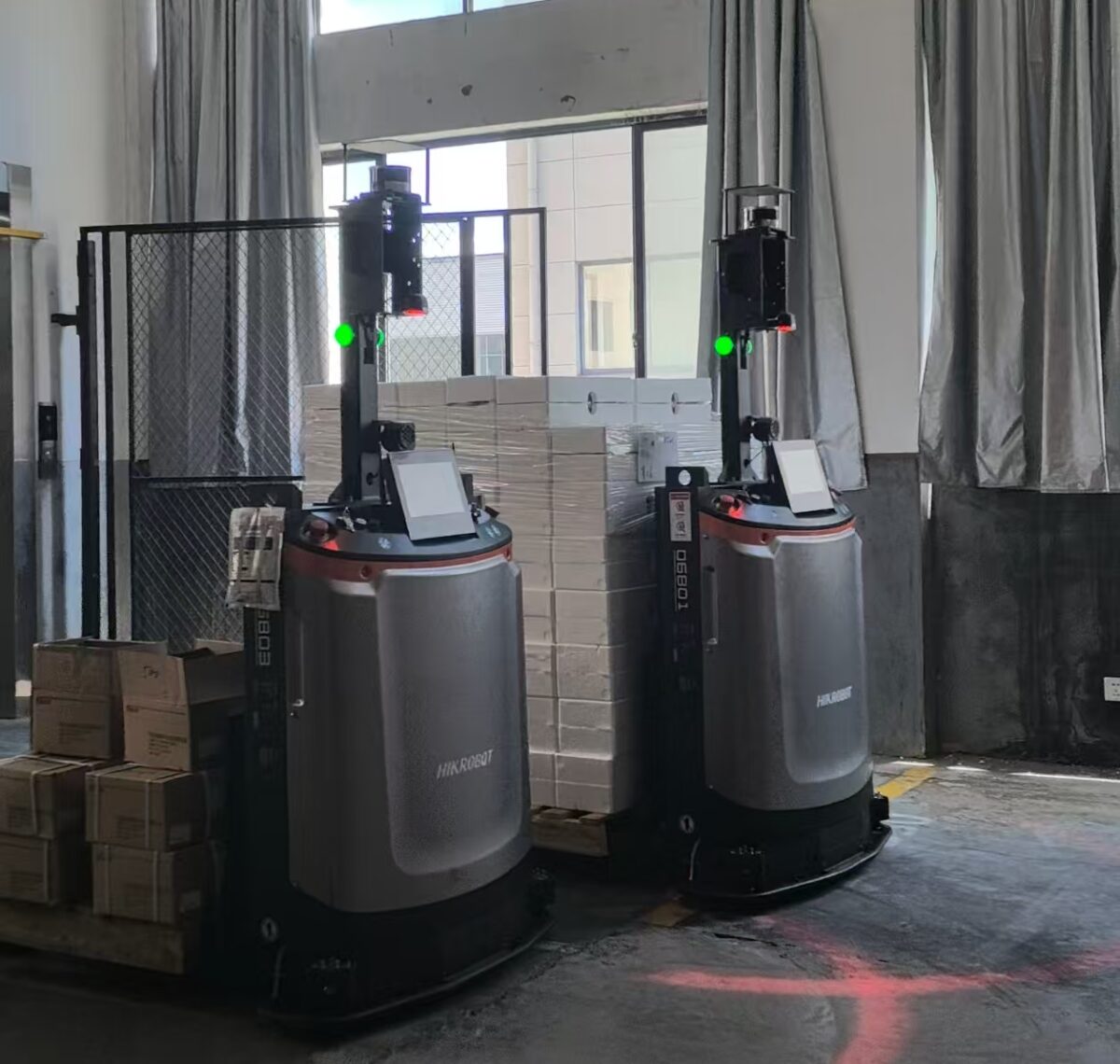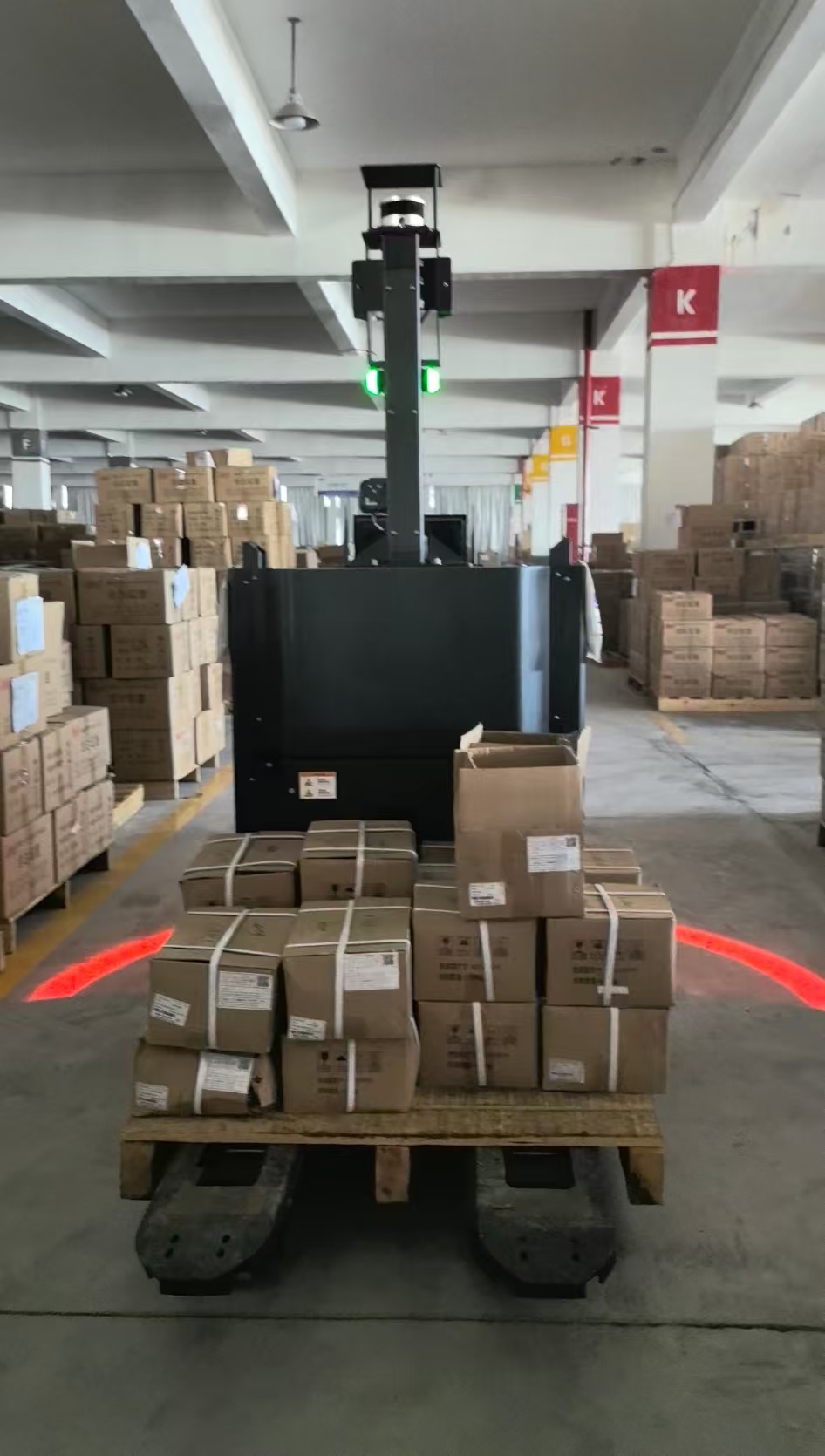Step into the production workshop of Zhejiang Heda Aluminum Industry, and you’ll witness a “new – old collaboration” in material handling: unmanned forklifts glide smoothly along preset paths, dedicated to the fixed – section transportation of cylinder heads; meanwhile, manual forklifts move flexibly around the workshop, taking on tasks of distribution and scheduling. This “human – machine collaboration” model is exactly Heda Aluminum Industry’s precise optimization of the handling process based on actual production needs.

In terms of operational characteristics, unmanned forklifts and manual forklifts each have their suitable scenarios. The core advantage of unmanned forklifts lies in “standardization and stability”: equipped with a laser navigation system, they boast high positioning accuracy. When dealing with fixed – route and fixed – frequency cylinder head transportation tasks such as “assembly line → cleaning line” and “inspection area → finished product warehouse”, they can operate continuously for 24 hours. This not only avoids parking deviations caused by fatigue in manual operations but also eliminates efficiency fluctuations during repeated tasks. Additionally, their built – in multi – sensor obstacle avoidance function can real – time identify obstacles like workshop personnel and equipment, triggering deceleration or emergency stops, thus ensuring more controllable safety. Moreover, every transportation data is synchronized to the management system, forming a full – link traceability of “task – path – goods”, which makes the transportation process of batch cylinder heads more transparent.
On the other hand, the irreplaceable feature of manual forklifts lies in their “flexibility and adaptability”. When faced with temporary transportation needs for rush orders, or the need to adjust the stacking position of cylinder heads and coordinate with sudden production scheduling, manual forklifts can quickly respond to operation instructions and adapt to the dynamically changing working environment in the workshop. Furthermore, during the process of loading goods onto vehicles, manual operators can adjust the handling angle based on experience, avoiding equipment adaptation issues and collisions — capabilities that unmanned forklifts have not yet fully covered in complex scenarios at present.
Based on this understanding of “complementary advantages”, Heda Aluminum Industry has only invested in a small number (2 – 3 units) of unmanned forklifts at this stage. Instead of pursuing “full unmanned operation”, the company uses them to undertake high – frequency and fixed basic transportation tasks, freeing manual forklifts from repetitive labor and allowing them to focus on operation links that require more flexible decision – making. This collaboration not only solves the pain points of “tight scheduling during peak order periods and low efficiency in repetitive operations” in the traditional fully manual handling mode but also avoids the cost pressure and adaptation risks brought by large – scale investment in intelligent equipment, making the optimization of the handling process more in line with the actual production capacity needs of the workshop.
For Heda Aluminum Industry, the upgrade of intelligent manufacturing has never been an “either – or” choice but a process of “practical adaptation”. The collaboration between unmanned forklifts and manual forklifts not only achieves a dual improvement in the “efficiency and safety” of cylinder head transportation but also reflects the company’s rational approach of gradually optimizing the production chain through small – step iterations. In the future, as production needs change, the company can flexibly adjust the investment scale of unmanned equipment based on existing operation data, ensuring that every upgrade accurately serves the “stability and smoothness” of cylinder head production.

